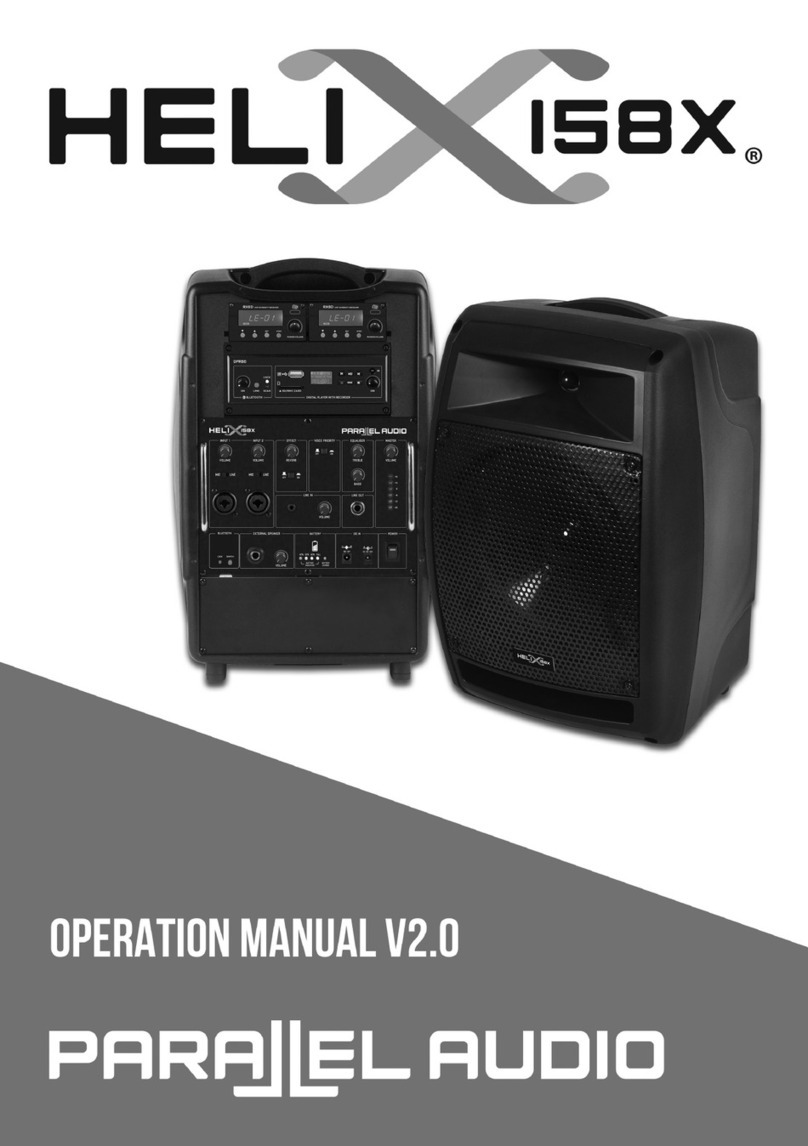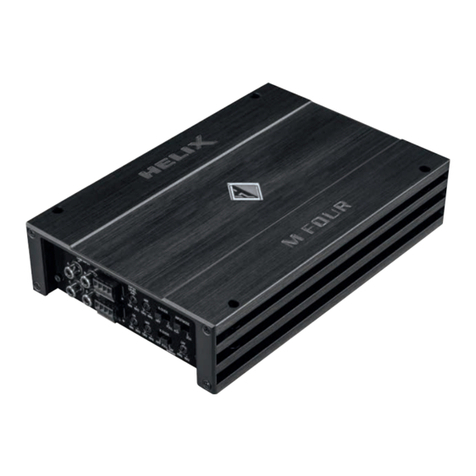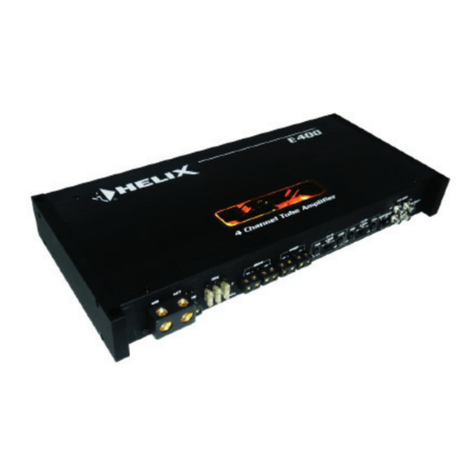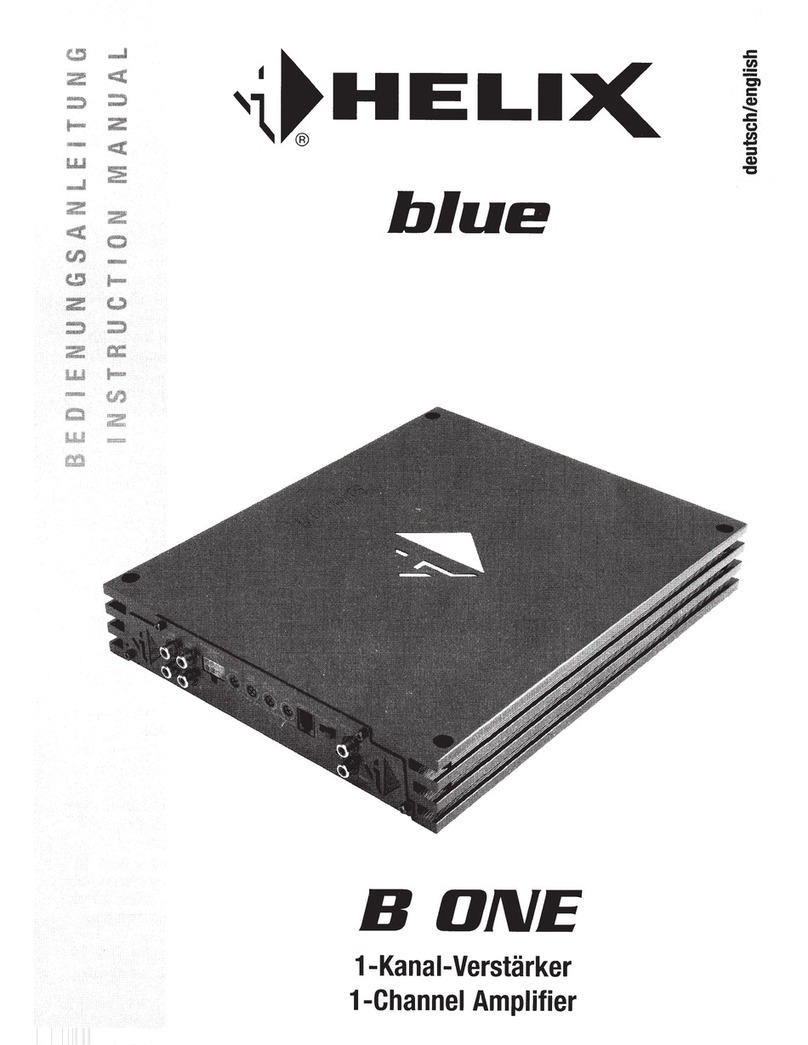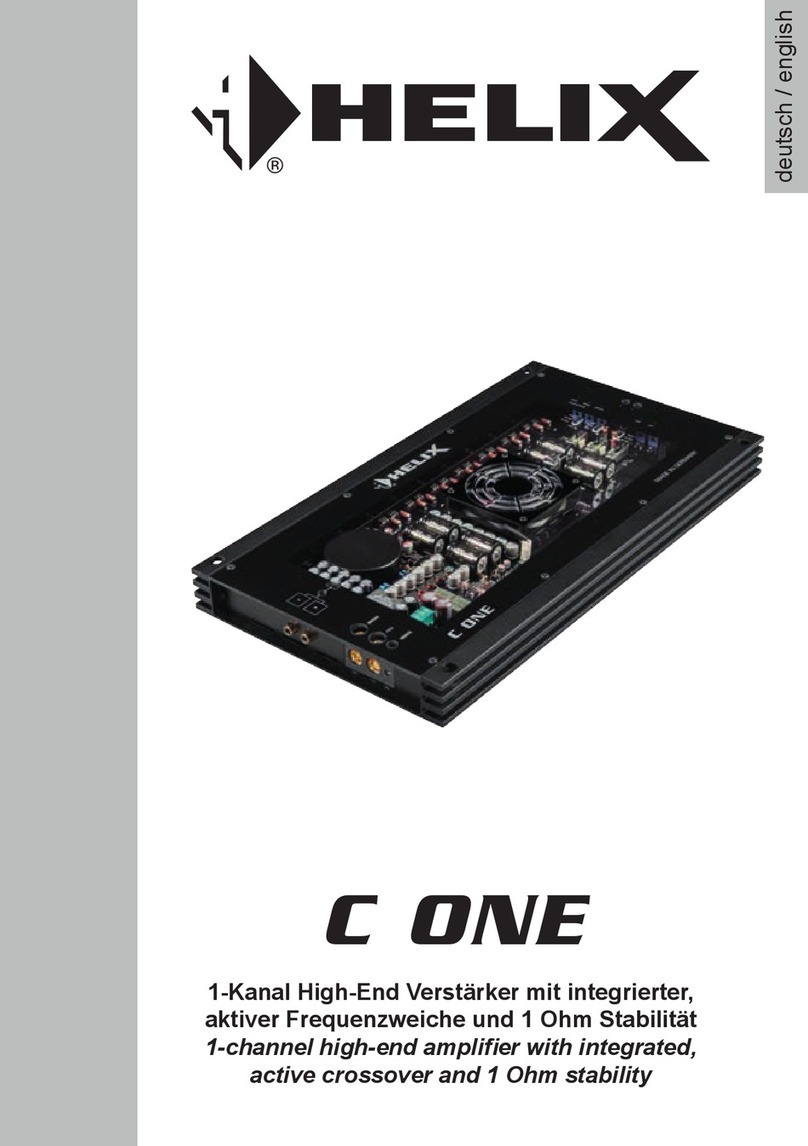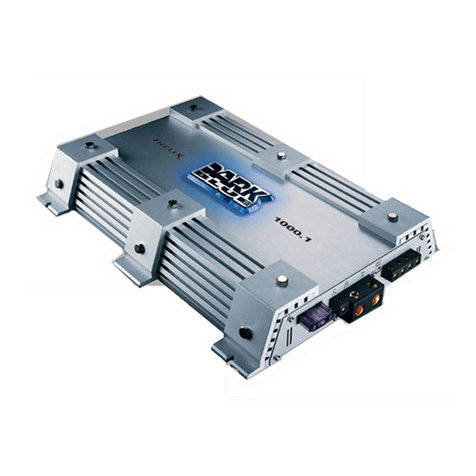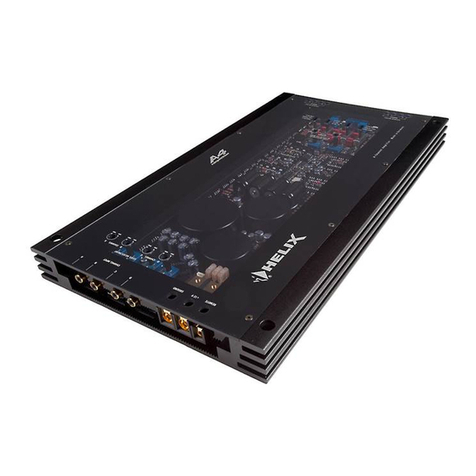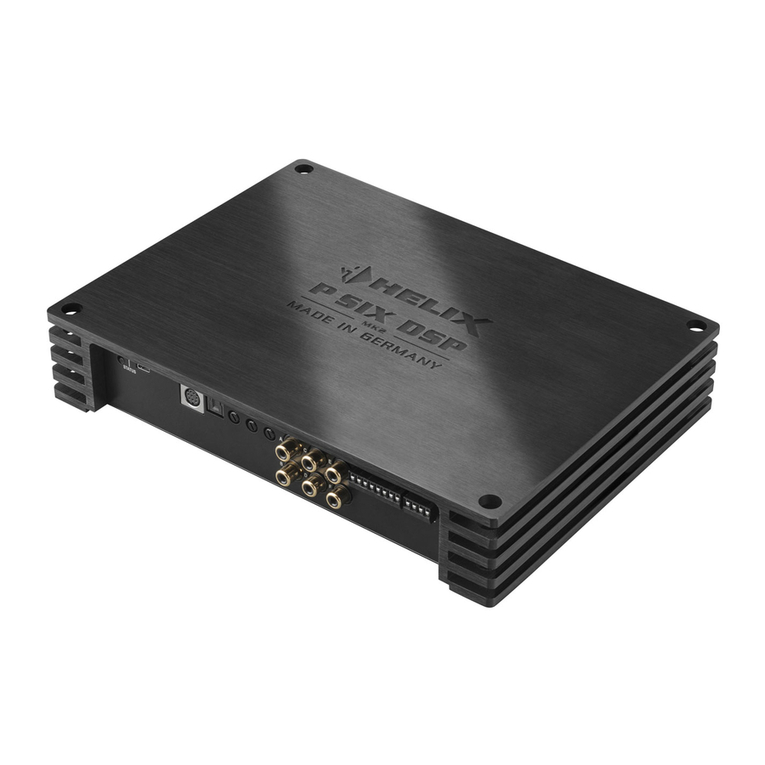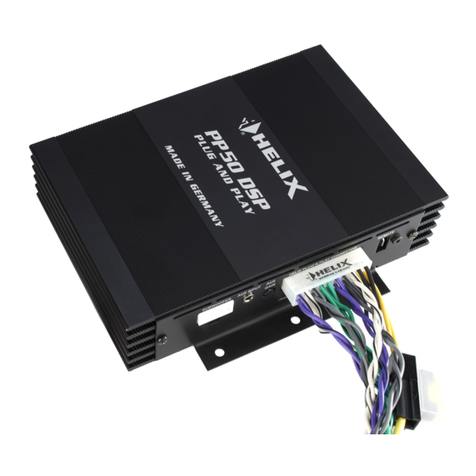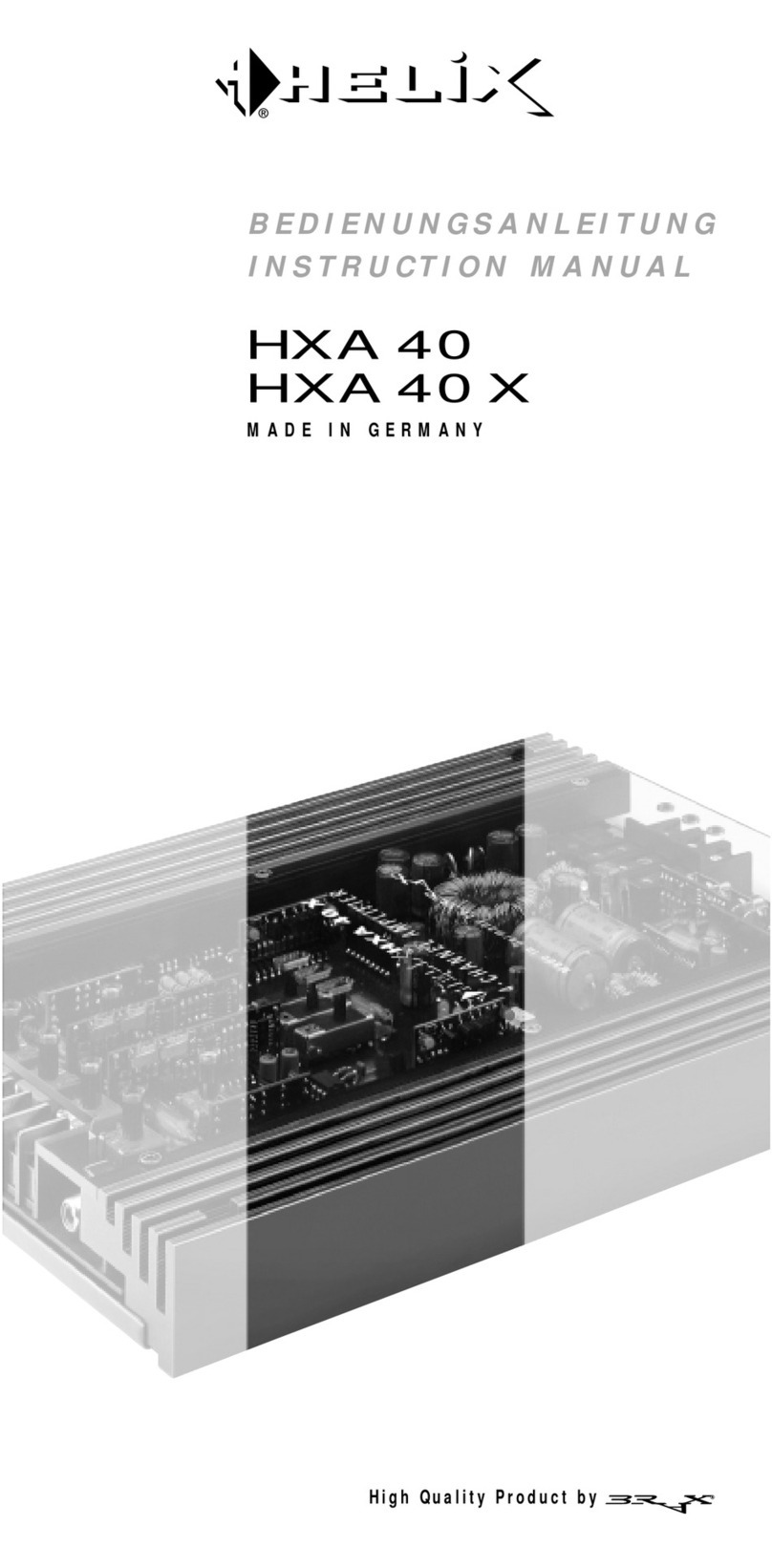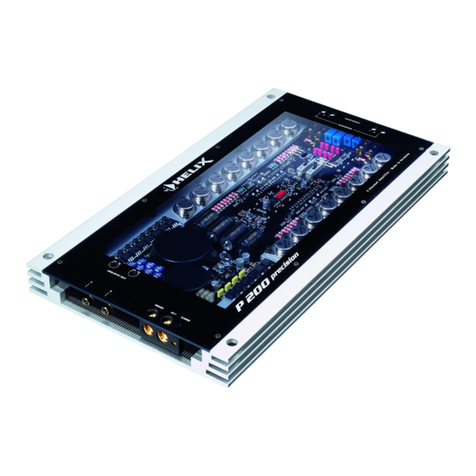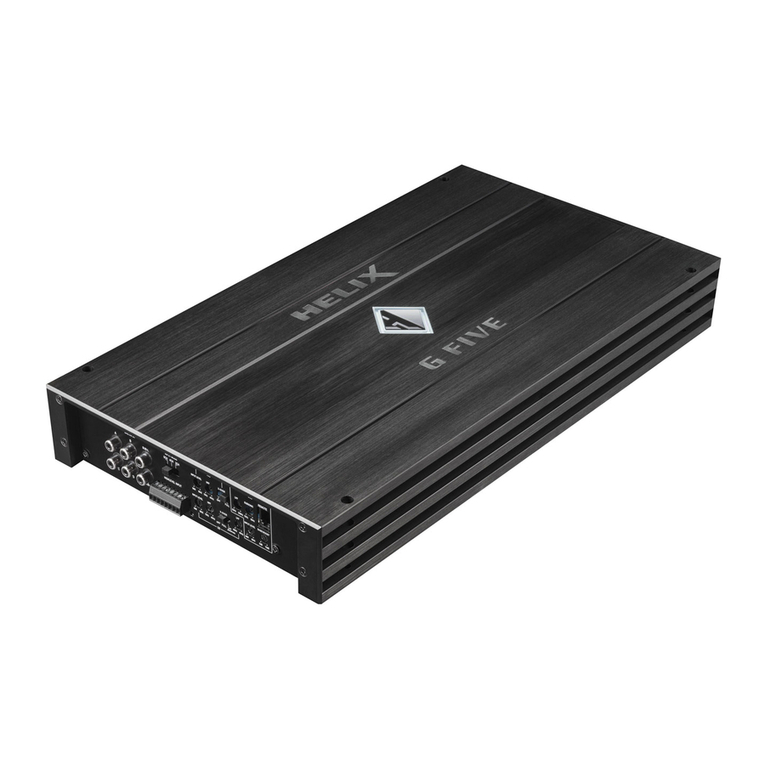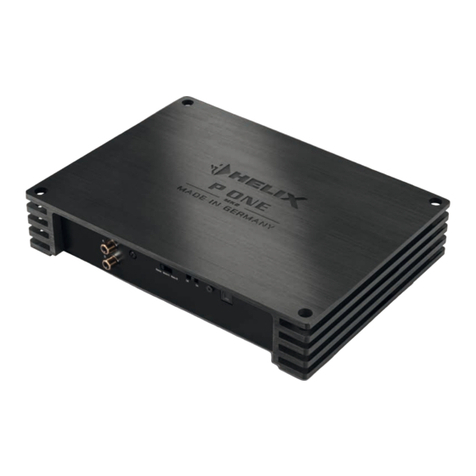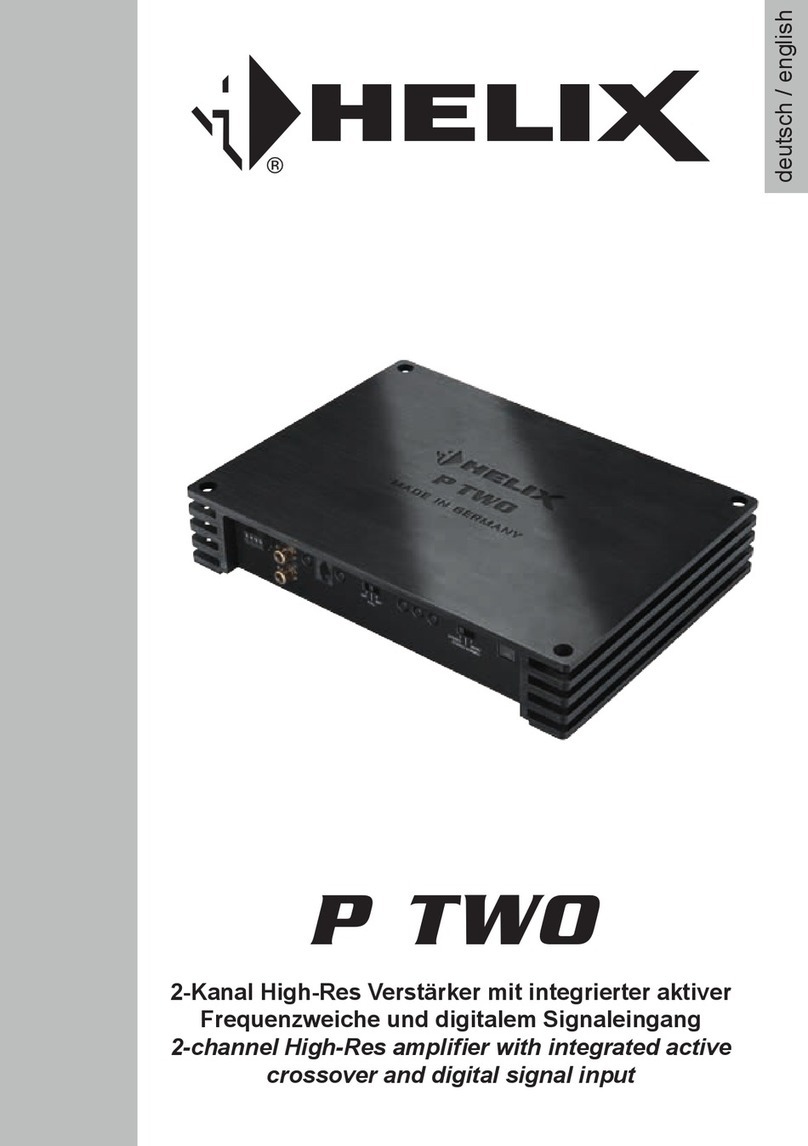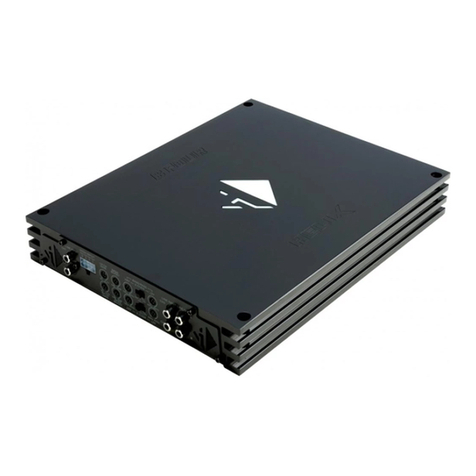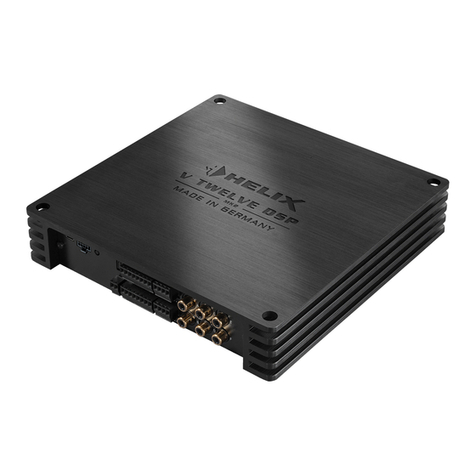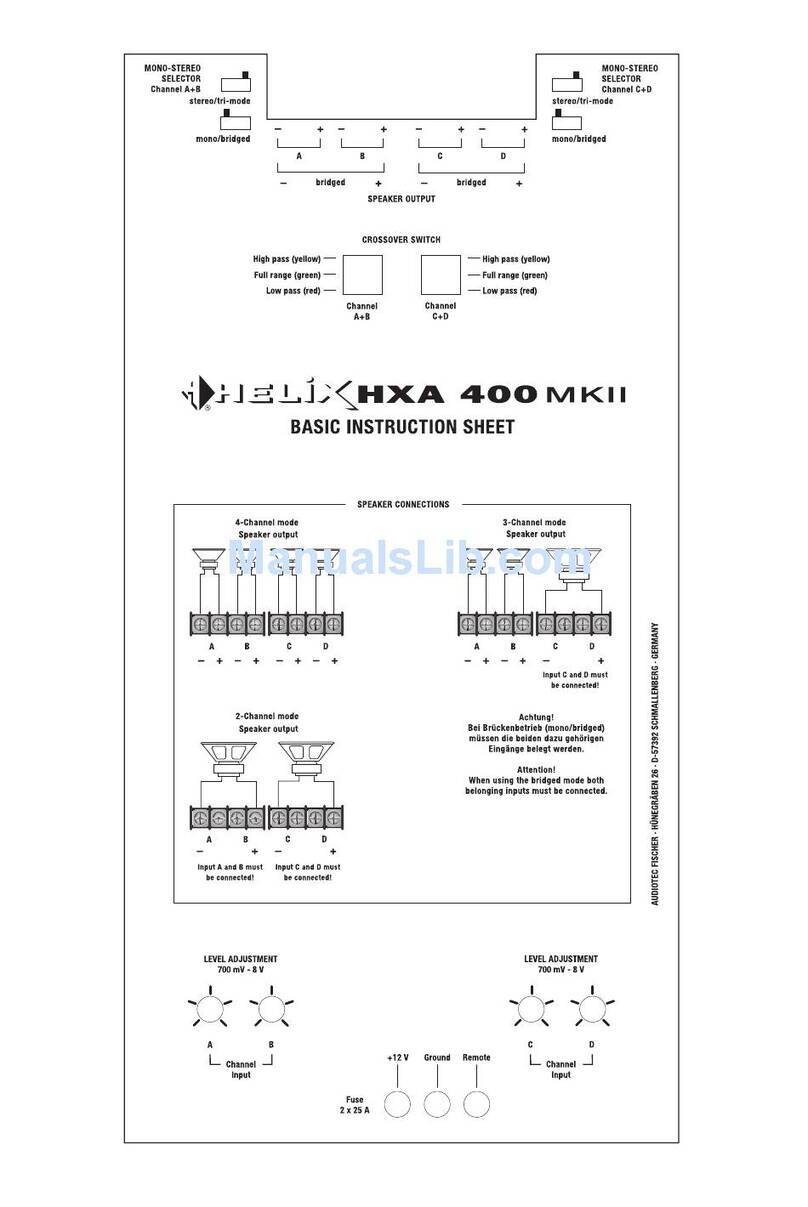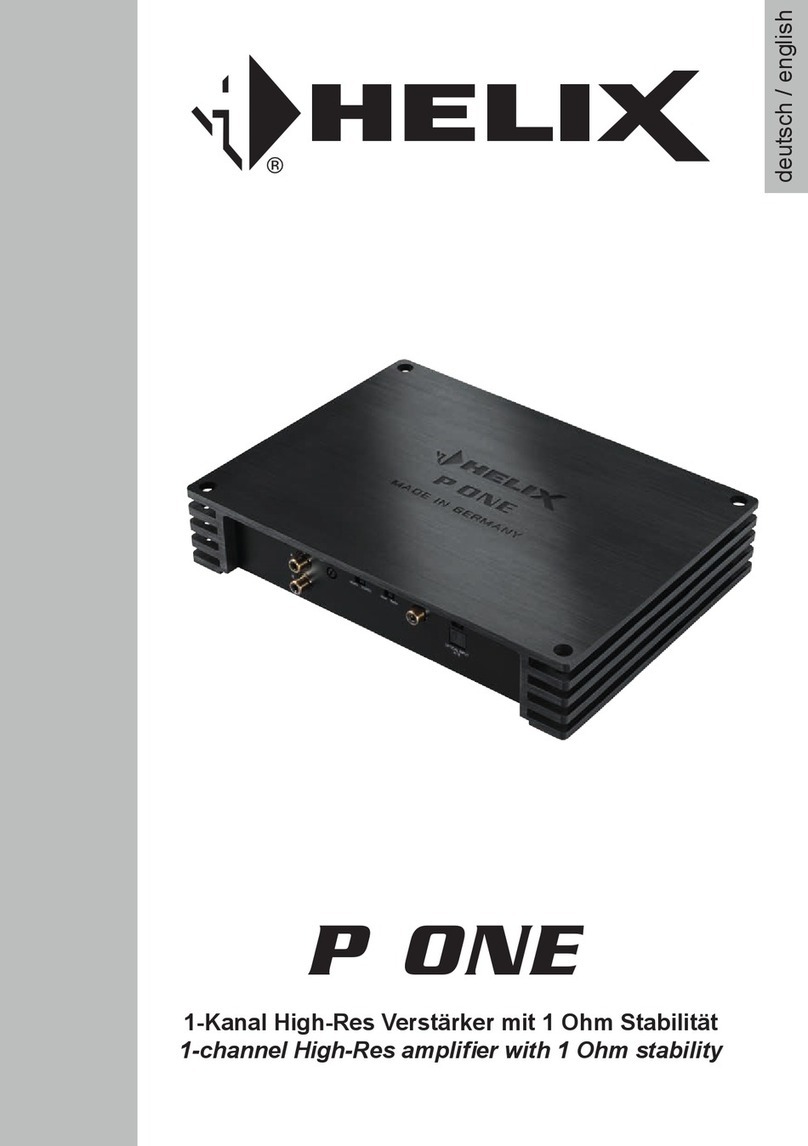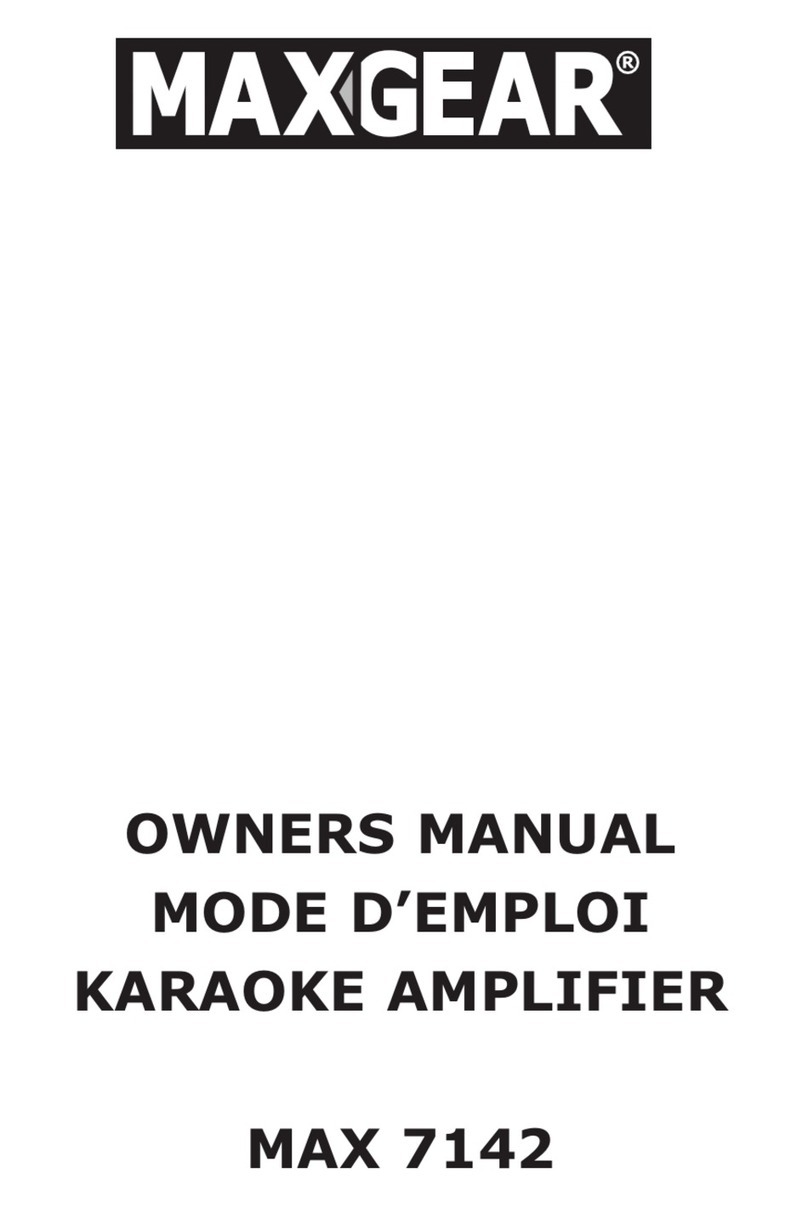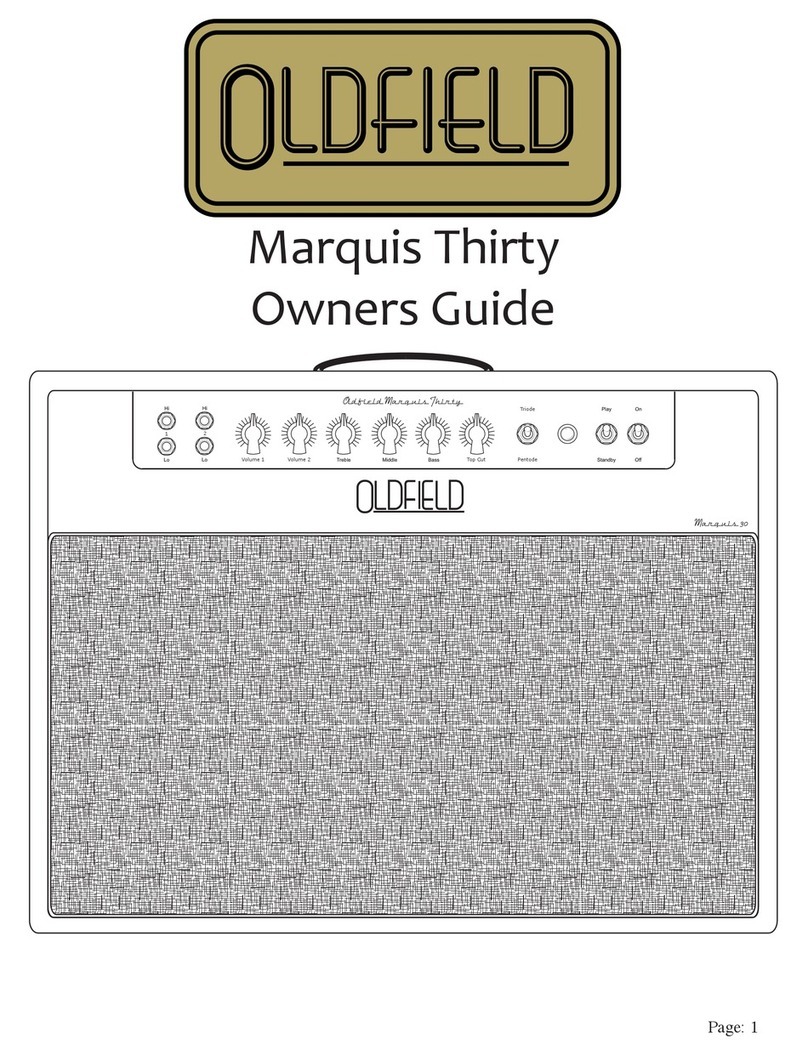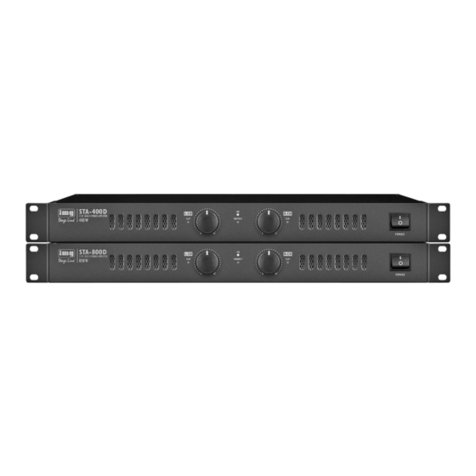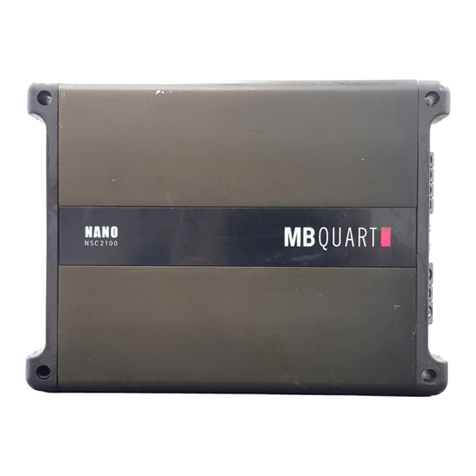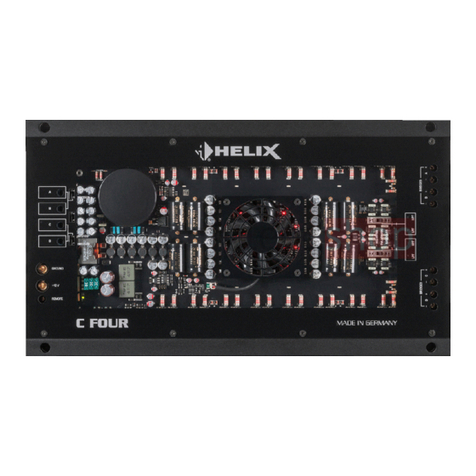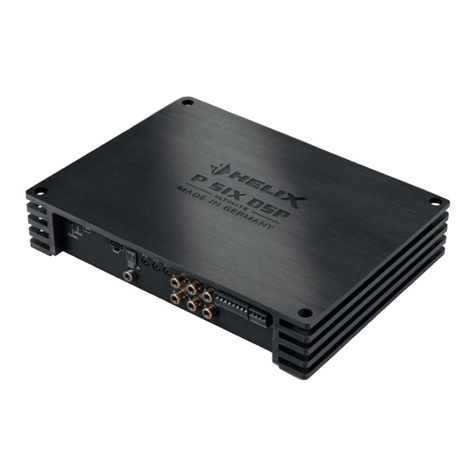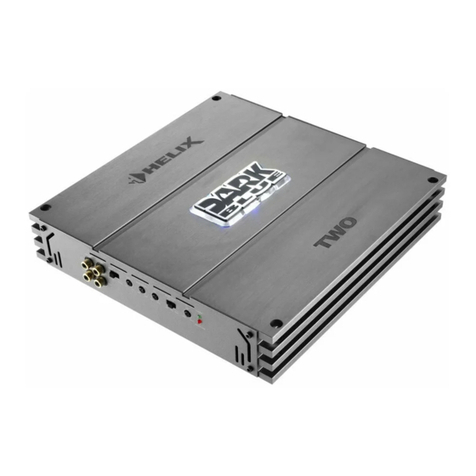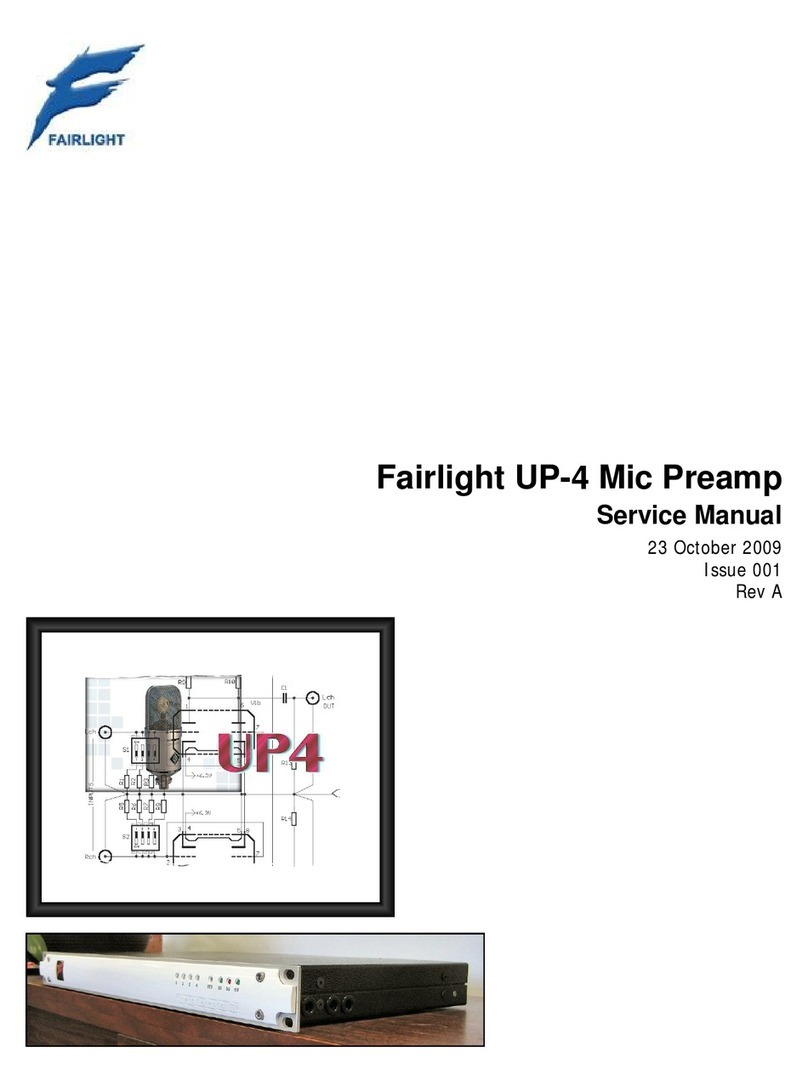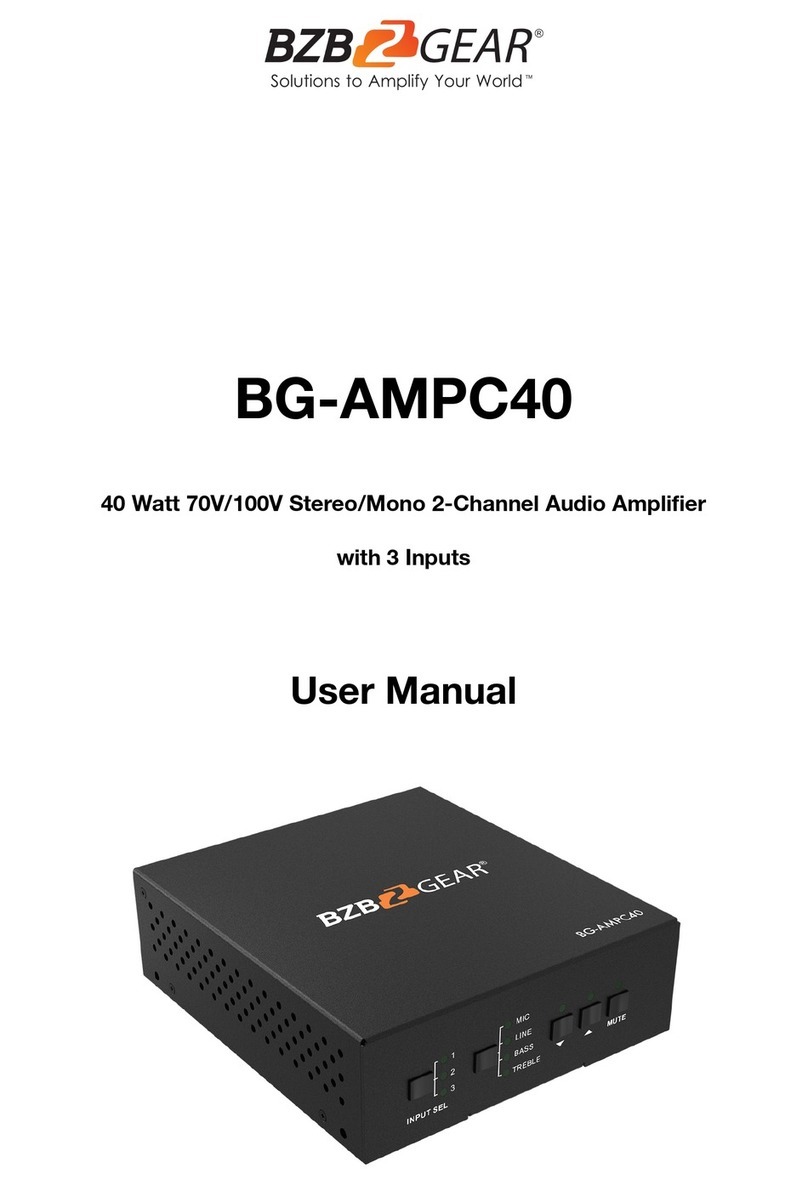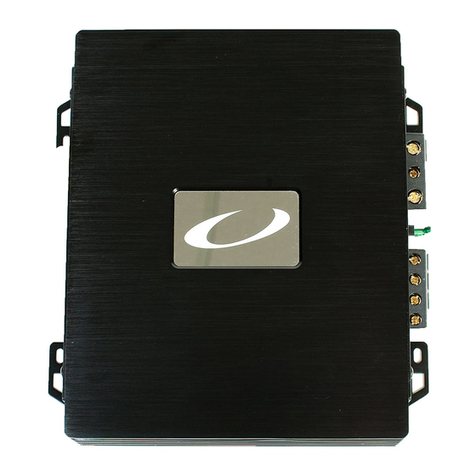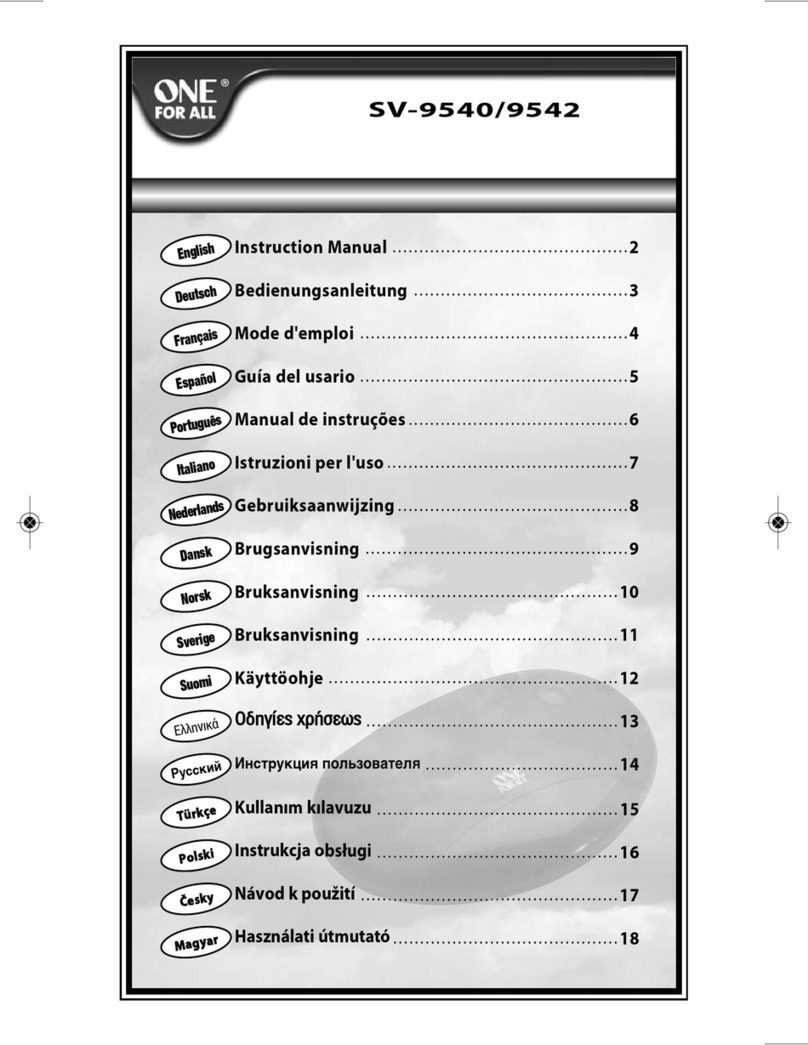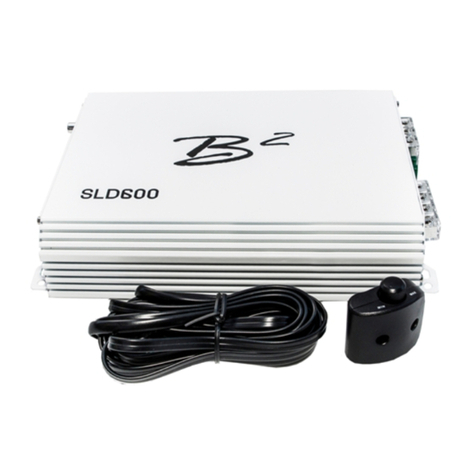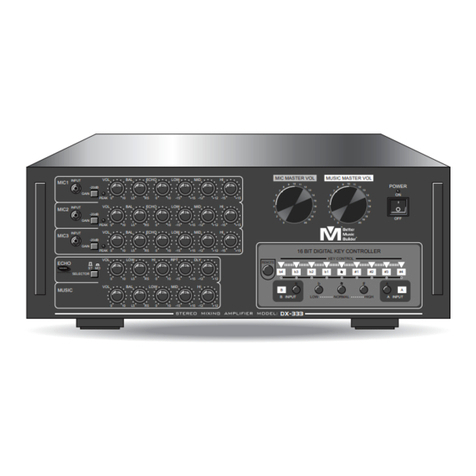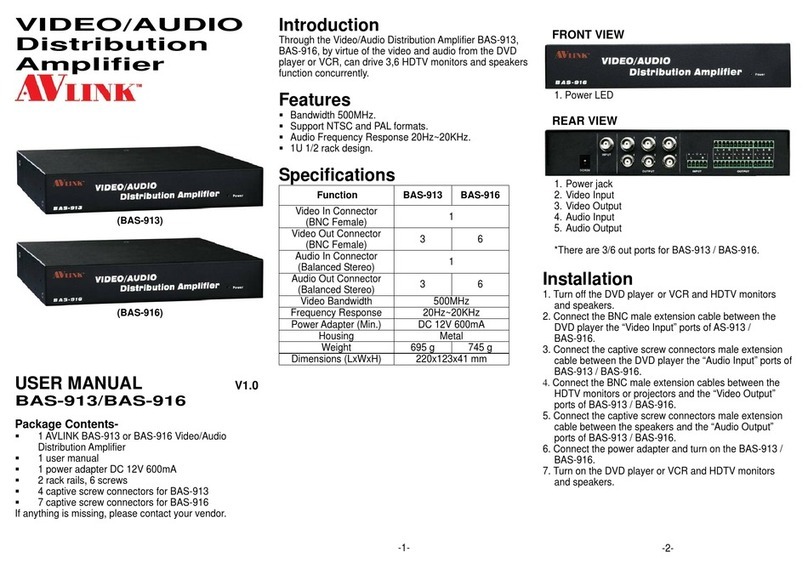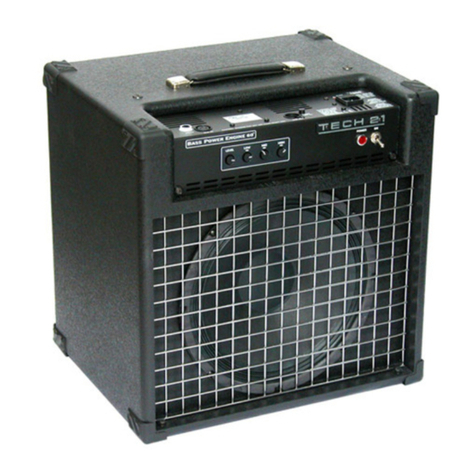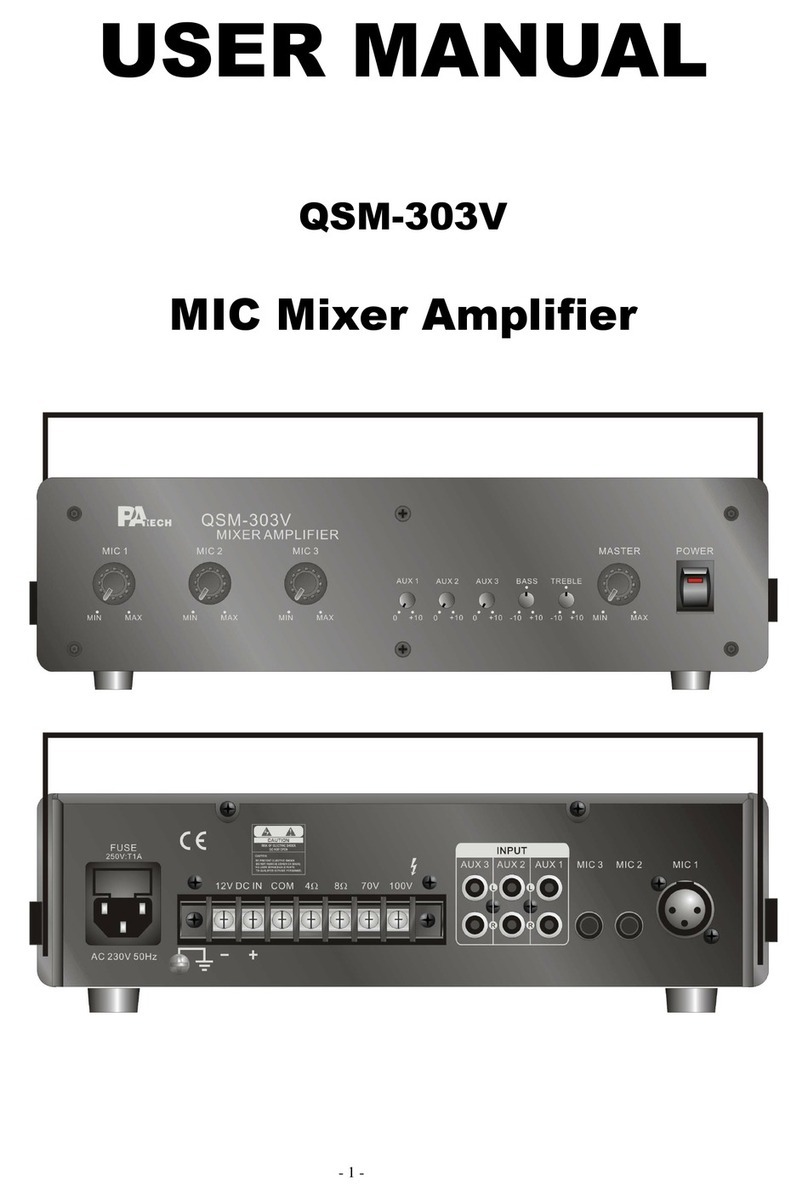4
Hochpass: 650 - 6000 Hz
21 Bassboost - Pegelregler zur Anhebung der Mitten-
frequenzen
Mit Hilfe des Reglers Nr. 21 kann die durch Regler Nr.
22 eingestellte Mittenfrequenz von 0 bis 9 dB angeho-
ben werden.
22 Einstellung der Mittenfrequenzen
Mit Hilfe des Reglers Nr. 22 kann auf dem Band des ein-
gestellten Tiefpasses oder Hochpasses (unterer
Frequenzbereich von 30 bis 200 Hz) eine Frequenz von
30 - 120 Hz gewählt werden, die mit Hilfe des Reglers
Nr. 21 von 0 bis 9dB angehoben werden kann. Dieses ist
sinnvoll, wenn bestimmte Frequenzen des Subwoofers
oder Kickbasses hervorgehoben oder korrigiert werden
sollen.
Wichtige Hinweise!
Der Verstärker A2 ist mit einem temperaturgesteuerten
intelligenten Netzteil ausgestattet. Diese neuentwickelte
Elektronik ermöglicht, dass der Verstärker bei sehr ho-
hen Temperaturen die Ausgangsleistung reduziert, um
ihn vor Zerstörung oder Abschaltung durch Überhit-
zung zu schützen. Diese Leistungsreduzierung ist im
normalem Gebrauch nicht zu hören, weil sie sich nur
bei Dynamikspitzen bemerkbar macht und sich der Ver-
stärker nur bei extremer Belastungen und sehr hohen
Außentemperaturen so stark erwärmt. Sollte sich der
Verstärker aufgrund Überhitzung (größer 95° Celsius)
ausschalten, kann es einige Minuten dauern bis der Ver-
stärker wieder einschaltet.
Ebenfalls verzögert sich das Einschalten des Verstärkers
aufgrund der integrierten Sicherheitselektronik um ca.
3 - 4 Sekunden. Dieses geschieht aufgrund der Erfas-
sung aller betriebssicherheitsrelevanten Spannungen,
die einen einwandfreien Betrieb garantieren.
Außerdem sind im Verstärker verschiedene elektroni-
sche Schutzschaltungen integriert, die bei Überlastung,
Überhitzung, Kurzschluss an den Lautsprechern, aber
auch bei zu niederohmigem Betrieb oder mangelhafter
Stromversorgung den Verstärker abschalten. Dieses
wird durch verschiedene LEDs angezeigt. (Siehe CPS
System Punkt 10-12) Prüfen Sie in diesem Fall alle An-
schlüsse auf Fehler, wie z.B. Kurzschlüsse, fehlerhafte
Verbindungen oder Falscheinstellungen und Übertem-
peratur. Sollte sich der Verstärker nach der Beseitigung
der Fehlerquelle nicht wieder einschalten lassen, liegt
ein Defekt vor und das Gerät muß mit Fehlerbeschrei-
bung und Kaufbeleg zur Reparatur an den Händler
zurückgegeben werden.
Verbinden Sie niemals die Lautsprecherleitungen
mit der Kfz-Masse (Fahrzeugkarosserie). Dieses kann
Ihren Verstärker zerstören. Achten Sie darauf, dass
alle Lautsprechersysteme phasenrichtig angeschlossen
sind, d.h. Plus zu Plus und Minus zu Minus. Der Plus-
pol ist bei den meisten Lautsprechern gekennzeichnet.
Im Auslieferungszustand ist die A2 als 2-Kanal Stereo
Verstärker voreingestellt.
30 Hz 120 Hz
20020 30 50 100 300 500
dB
Hz
variabel
Wichtige Lautsprecher Anschlussinformationen
Die A2 verfügt über 2 integrierte Leistungsverstärker,
wobei jeder für sich 1 Ohm stabil ist. Das heißt, das an
jedem Kanal eine Lautsprecherimpedanz von 1 Ohm
angeschlossen werden kann. Beim Brückenbetrieb
arbeiten je zwei Verstärker zusammengeschaltet als ein
Kanal. Hierbei muss beachtet werden, dass jeder Kanal
die Hälfte der angeschlossenen Impedanz verarbeiten
muss. Wenn z.B. ein 4 Ohm Lautsprecher an eine
gebrückte Endstufe angeschlossen wird, so sieht jeder
einzelne Kanal 2 Ohm, bei einem 2 Ohm Lautsprecher
also 1 Ohm. Also ist 2 Ohm die untere Impedanzgrenze
die gebrückt angeschlossen werden kann, da jeder Kanal
für sich nur 1 Ohm stabil ist.
Die Impedanz pro Kanal darf 1 Ohm nicht unter-
schreiten.
Wir garantieren Ihnen einen unbegrenzten Hörgenuss
mit absolut ausreichender Leistung bei Beachtung dieser
wertvollen Informationen.
Helix Produkte geniessen aufgrund ihres hohen
Qualitätsniveaus international einen ausgezeichneten
Ruf. Daher gewähren wir eine Garantiezeit von 2 Jahren.
Die Produkte werden während der gesamten Fertigung
ständig kontrolliert und geprüft. Bitte beachten Sie im
Servicefall folgende Hinweise:
1. Die 2-jährige Garantiezeit beginnt mit Kauf des
Produktes und gilt nur für den Erstbesitzer.
2. Während der Garantiezeit beseitigen wir etwaige
Mängel, die nachweislich auf Material-oder Fabrika-
tionsfehler beruhen, nach unserer Wahl durch Aus-
tausch oder Nachbesserung der defekten Teile.
Weitergehende Ansprüche, insbesondere auf
Minderung, Wandlung, Schadenersatz oder
Folgeschäden sind ausgeschlossen. Ersetzte Teile
gehen in das Eigentum von Audiotec Fischer über.
Die Garantiezeit wird von einer Garantieleistung
durch uns nicht berührt.
3. Am Produkt dürfen keine unsachgemäßen Eingriffe
vorgenommen worden sein.
4. Bei Inanspruchnahme der Garantie wenden Sie sich
bitte zuerst an Ihren Fachhändler. Sollte es notwendig
sein, das Produkt an uns einzuschicken, so beachten
Sie bitte folgende Hinweise:
a) Das Produkt muss in einwandfreier Original-
verpackung verschickt werden
b)
Die Garantiekarte muss ausgefüllt dem Produkt beiligen
c) Das Produkt muss frachtfrei zugestellt werden, d.h.
Porto und Risiko gehen zu Ihren Lasten
d) Die Kaufquittung muss beiliegen
5. Von der Garantie ausgenommen sind:
a) Transportschäden, sichtbar oder unsichtbar (Reklama-
tionen für solche Schäden müssen umgehend bei der
Transportfirma eingereicht werden)
b) Kratzer in Metallteilen, Frontabdeckungen usw.
Diese Defekte müssen innerhalb von 5 Tagen nach
Kauf direkt bei Ihrem Händler reklamiert werden.
c) Fehler, die durch fehlerhafte Aufstellung, falschen
Anschluss, unsachgemäße Bedienung, Beanspruchung
oder äußere gewaltsame Einwirkung entstanden sind.
d) Unsachgemäß reparierte oder geänderte Geräte, die
von anderer Seite als von uns geöffnet wurden.
e) Folgeschäden an fremden Geräten
f) Kostenerstattung bei Schadensbehebung durch Dritte
ohne unser vorheriges Einverständnis
g) Geräte mit entfernten Typenschildern oder Serien-
nummern.
DEUTSCH
0 dB 9 dB
50050 100 200 30020 30
variabel
Hz
dB
2K 5K Hz
650 Hz 6 kHz
variabel
Garantiebestimmungen








